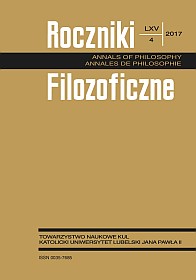Does the Value of Life Increase Near Its End?
Abstract
The costs of life-extending care at the end of life are often disproportionately high in relation to the benefits it brings to the patients. Thus, the unrestricted principle of cost-effectiveness as a rule of rational healthcare allocation would require us to limit publicly funded life-prolonging treatments for patients nearing the end of life. From a societal perspective, however, this limitation would be often callous and inhuman. There are three possible ways to reconcile these two attitudes. First, we could restrict the principle of cost-effectiveness by questioning its validity in the field of end-of-life care. Second, we could raise the acceptable upper cost-effectiveness threshold for end-of-life treatments. Thirdly, it is also possible to maintain that the seemingly rather poor effects of end-of-life treatments are actually much better, because the value of life increases as death draws near. In this paper, I discuss the plausiblity of this last solution.
References
Becker, Gary, Kevin Murphy i Tomas Philipson. 2007. „The Value of Life Near Its End and Terminal Care”. NBER Working Paper No. 13333, National Bureau of Economic Research, August 2007. DOI: 10.3386/w13333.
Bradley, Ben. 2006. „Two Concepts of Intrinsic Value”. Ethical Theory and Moral Practice, 9: 111–130. DOI: 10.1007/s10677-006-9009-7.
Chochinov, Harvey Max. 2011. „Death, time and the theory of relativity”. Journal of Pain and Symptom Management 42, 460–463.
Cookson, Richard. 2013. „Can the NICE ‘end-of-life premium’ be given a coherent ethical justification?”. Journal of Health Politics, Policy and Law, 38, No. 6: 1129-48. DOI: 10. 1215/ 03616878-2373166.
Dixon, Simon, Louise Longworth i Allan Wailoo. 2009. „Assessing technologies at the end of life: a review of empirical evidence. Report by the decision support unit”, 26 November 2009. NICE Decision Support Unit. Dostęp 25.10.2017. http://scharr.dept.shef.ac.uk/nicedsu/wp-content/uploads/sites/7/2016/03/DSU-EOL-lit-review. FINAL_.pdf.
Dworkin, Ronald. 1993, Life’s Dominion: An Argument About Abortion, Euthanasia, and Individual Freedom, New York: Random House.
Galewicz, Włodzimierz. 2016. „Dobro dla kogoś i dobro dla świata”. Przegląd Filozoficzny — Nowa Seria 25, nr 1 (97): 33–44.
Hughes, Jonathan. 2005. „Palliative care and the QALY problem”. Health Care Analysis 13, 289–301. DOI: 10.1007/s10728-005-8126-0.
Menzel, Paul T. 2011. „The Value of Life at the End of Life: A Critical Assessment of Hope and Other Factors”. Journal of Law, Medicine and Ethics 39, no. 2: 215–23. DOI: 10.1111/j.1748-720X.2011.00590.x.
Nagel, Thomas. 1997. Widok znikąd. Tłum. Cezary Cieśliński. Warszawa: Fundacja „Aletheia”.
NICE [National Institute for Health and Clinical Excellence]. 2009. Appraising Life-Extending, End of Life Treatments. London: National Institute for Health and Clinical Excellence.
Rawlins, Michael, David Barnett i Andrew Stevens. 2010. „Pharmacoeconomics: NICE’s approach to decision-making”. British Journal of Clinical Pharmacology, 70(3): 346–349. DOI: 10.1111/j.1365-2125.2009.03589.x.
Copyright (c) 2017 Roczniki Filozoficzne

This work is licensed under a Creative Commons Attribution-NonCommercial-NoDerivatives 4.0 International License.





